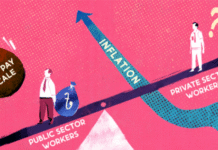AN OPEN DIALOGUE
Can we minimise the risk of riverine accidents?

An array of recent accidents in the country, as well as another one outside, point to the need for improved regulations and stricter enforcement and oversight in transportation, energy, and aviation sectors. The plane crash in Kathmandu, a train derailment near Tongi, and the sinking of a coal-carrying barge in Khulna were all preventable. Fortunately, there were no human casualties in the latest accident, in which MV Bilash carrying 775 tonnes of coal capsized on April 14 in the Harbaria Channel near the Mongla River Port.
However, environmentalists have voiced their concern regarding the possibility of damage to the ecosystem that might result from this catastrophe. An initial assessment indicates that the spillover effect from the submerged coal would be negligible based on the assurance from the captain who claimed that the cargo was “covered”. Sahara Enterprise, the owner of the vessel, claimed that, “The coal was still inside the vessel so there was no concern about any environmental disaster.” However, according to Mahmudul Hasan, divisional forest officer of Sundarbans East Zone, the accident spot was very close to the Sundarbans and the coal-mixed water was spreading to different parts of the mangrove forest.
Investigations into the three accidents are incomplete as this column goes to press, but from all accounts it is almost certain that human errors played a major role in each. The onus lies squarely on us for errors of omission and commission and the chances of recurrence can be, and need to be, minimised. This string of accidents in air, land, and water makes the job of any government tough, since regardless of the findings of the accident reports, the ultimate responsibility lies with the administration to undertake efforts to prevent these disasters, and lessen their consequences.
Accidents have major lessons or “takeaways”, and after the initial experience of loss, anger, and grief we move forward. The Rana Plaza collapse in 2013, the Exxon Valdez oil spill in 1989, and the Bhopal gas leak in 1984 all led to major changes in their respective industries. Bangladesh has recently witnessed several instances of coal-carrying barges going down in our waterways. Mishaps such as these have economic, environmental, and health impacts. While the latest incident on the Possur River did not cause any loss of life, there are other fallouts.
Bangladesh’s development strategy to achieve middle-income status is based on economic growth, infrastructural development, and expansion of the power sector. Therefore, one can sum up the dilemma we face as follows: (i) Energy use is the driving force behind growth, (ii) Our energy consumption is low, but also very expensive, and (iii) We need to lower the cost to increase use.
There are many reasons why the MV Bilash accident should serve as a wake-up alarm for different stakeholders in coal transportation business, such as operators, law enforcement agencies, designers, users and others concerned, in order to come up with a coordinated action plan for the future.
First, it is expected that riverine traffic in this area will increase considerably in future. If the government’s plan to boost electricity generation by coal-powered plants goes through, we will witness growth in import of coal and transshipment by river.
Second, the government has approved over 200 industries to be set up within 10km of the Sundarbans. Once these factories start operation in the coming years, commerce and passenger traffic will receive a boost.
Third, ecotourism in the Sundarbans area has picked up significantly in the last decade. Unless there is stricter enforcement of vessels plying the rivers and waterways in the southwestern region of the country, and certification and training of crews are brought up to par with international standards, accidents are bound to happen and a single major accident can unleash a chain reaction and threaten the ecosystem.
The import, transportation, and consumption of coal have increased in recent years. According to PSMP forecasts, our import of coal will top 60 million tonnes by 2041, and global evidence shows that there are occupational and public health and safety risks from the principal methods of coal transportation: railroads, barges, conveyor belts, and trucks. The environmental impacts of coal transportation include air pollution, water pollution, solid wastes, noise levels, safety and traffic hazards.
Returning to the case of MV Bilash, it has been reported that this accident is the sixth in the last three and a half years. A total of eight commercial ships—one oil tanker, six vessels carrying coal and fertiliser, and a launch—sank in rivers running through the Sundarbans in the last five years from March 14, 2013 to April 14, 2018. Typically, the owners of these boats are given the opportunity to refloat them and everything then goes back to business as usual. In 2016, the Sea Horse, a large bulk cargo vessel carrying 1,245 tonnes of coal, sank in the Shela River in 2016 and the owners went scot-free. The Sea Horse accident resulted in spillage of coal, hundreds of gallons of fuel oil and other toxic contaminants inside the Sundarbans World Heritage site.
So, how do we lessen the chances of accidents and prepare for the expected uptick in coal use? First of all, damages to ecosystem must be prosecuted. Willful negligence by operators results in lawsuits in many countries (including India) which impose fines and seek damages for such misdeeds. Study models show that the more the contractors spend on accident prevention, the more the benefits of accident prevention they derive.
Secondly, surveys reveal various ways to minimise the chances of accidents in our waterways. According to data published in “Riverine Accidents in Bangladesh: Ways Out,” a study conducted by Captain Mahmud Hossain of Bangladesh Coast Guard, factors contributing to such accidents are unfit vessels, disregard for and ignorance of rules, and lack of enforcement. Another study pointed the finger at a lack of delineation between the different agencies working under the Ministry of Shipping, including Department of Shipping, Bangladesh Inland Water Transport Corporation, and Bangladesh Inland Water Transport Authority, lack of enforcement and monitoring, jurisdictional confusion, shortage of experienced crew and skilled masters, and absence of exemplary trial and punishment.
Finally, currently Bangladesh does not have the advanced technology and trained manpower necessary to carry out river surveys regularly. As a result, the river routes remain uncharted for a long time. Reduction of the depth of rivers by siltation and presence of underwater wreckage remain hidden dangers, and hazard warnings are often ignored by the operators. The government’s own reports indicate that the port authorities do not clearly specify the required draft for shifting vessel from high seas to the inlet channels, for example, from Kutubdia to Chittagong outer anchorage.
To sum it all up, recent “episodes of ships capsizing have created a cumulative impact that endangers the rare aquatic ecology of the Sundarbans,” warned Donna Lisenby, energy campaign manager for Waterkeeper Alliance. “If the Rampal and Orion coal-fired power plants are built, the resultant dramatic increase in ship traffic will further imperil the Sundarbans.” Needless to point out that tightening of regulations, better enforcement, and investment in technology and training will not only facilitate our transition to middle-income status, but also have spillover beneficial effects in all modern sectors, including manufacturing, transportation, and energy. As they say, “prevention is better than cure.”
Dr Abdullah Shibli is an economist, and Senior Research Fellow, International Sustainable Development Institute (ISDI), a think-tank in Boston, USA. His new book Economic Crosscurrents will be published later this year.
Source: The Daily Star.









